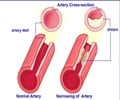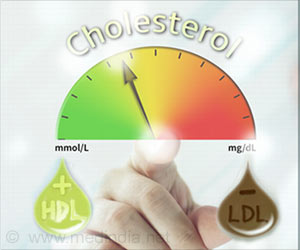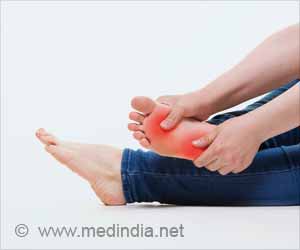A new guide published by NHLBI helps you make the lifestyle changes needed to reduce cholesterol and with it the risk for heart disease.
A new guide "Your Guide to Lowering Your Cholesterol with TLC (Therapeutic Lifestyle Changes)" is a new publication designed by National Heart, Lung, and Blood Institute (NHLBI) to help you make the lifestyle changes needed to reduce cholesterol and with it the risk for heart disease.
September is National Cholesterol Education Month and the new guide released has lifestyle tips to reduce cholesterol. The guide details a three-part program of diet, physical activity, and weight management designed to bring cholesterol levels down. Nearly 65 million Americans have high blood cholesterol."Lifestyle is crucial for lowering cholesterol but it's not enough to tell people it's important—you have to help them do it. This guide offers a set of tools to help people get started and to embrace a heart-healthier way of living," said the NHLBI's James Cleeman, M.D., coordinator of the National Cholesterol Education Program (NCEP).
The 80-page easy-to-read booklet is based on the NCEP's guidelines on cholesterol management. These guidelines emphasize the importance of therapeutic lifestyle changes (TLC)—intensive use of heart-healthy eating, physical activity, and weight control—for cholesterol management. TLC is the cornerstone of treatment, according to Cleeman, even if someone also has to take a cholesterol-lowering medication.
As the booklet explains, following a TLC diet means reducing saturated fat, trans fat, and cholesterol in order to lower LDL, the “bad” cholesterol. How do you know how low your LDL cholesterol should be? Your goal LDL level is determined by your risk for developing heart disease or having a heart attack. To help you determine your risk, the new guide includes the NCEP 10-year coronary heart disease risk calculator. Once your LDL goal is determined, you and your doctor can use the new booklet to implement TLC and reach your goal.
To help reduce saturated fat, trans fat, and dietary cholesterol, the guide offers tips on choosing and preparing low fat meals, selecting healthy snacks, reading nutrition labels, and dining out while staying on the TLC diet. The booklet includes sample menus for different types of cuisine (traditional American, Southern, Mexican-American, and Asian).
The LDL-lowering power of the TLC diet can be boosted by adding soluble fiber and plant stanols and sterols, substances derived from plants that help block cholesterol absorption. The guide suggests ways to add fiber to the diet and discusses the value of plant stanols and sterols and which food products have them.
Advertisement
Overweight and obesity increase a person's LDL level and can also raise triglycerides and lower HDL. To help people lose those extra pounds, the guide includes calorie-cutting strategies, ideas for substituting lower calorie foods for high calorie favorites, and a handy chart of portion sizes based on NHLBI's Portion Distortion Interactive Quiz (http://hin.nhlbi.nih.gov/portion/). There are also sample menus for TLC at different calorie levels.
Advertisement
The last chapter of the guide, Learning to Live the TLC Way, offers suggestions for how to make the needed lifestyle changes—and get back on track if you fall off the program. A key strategy is to follow TLC with family and friends. Those closest to you can provide support—and help you plan heart healthy meals and physical activities. They can also benefit as the program can help them prevent high cholesterol and/or other risk factors.
"TLC is more than a diet. It's really a change in your way of living to help you stay heart healthy," said Dr. Cleeman.
(Source: Eurekalert)








